Why does this snippet
const firstArray = ['toto', 'toto'];
const secondArray = ['titi', 'titi'];
firstArray.forEach(async (toto, i) =>
{
await secondArray.forEach(async titi =>
{
// async code
console.log(titi, i);
});
// async code
console.log(toto, i);
});
produce the following output:
Removing the await keyword produces the expected output
My guess is it resides in the await keyword's behaviour, as, without which, the produced output is the expected output.
EDIT: this is a purely trivial question. I want to understand why using await before a forEach provides this behaviour. There is no 'concrete code' behind this.
EDIT2: edited the snippet as the comments and answer reflected misunderstanding of my question

